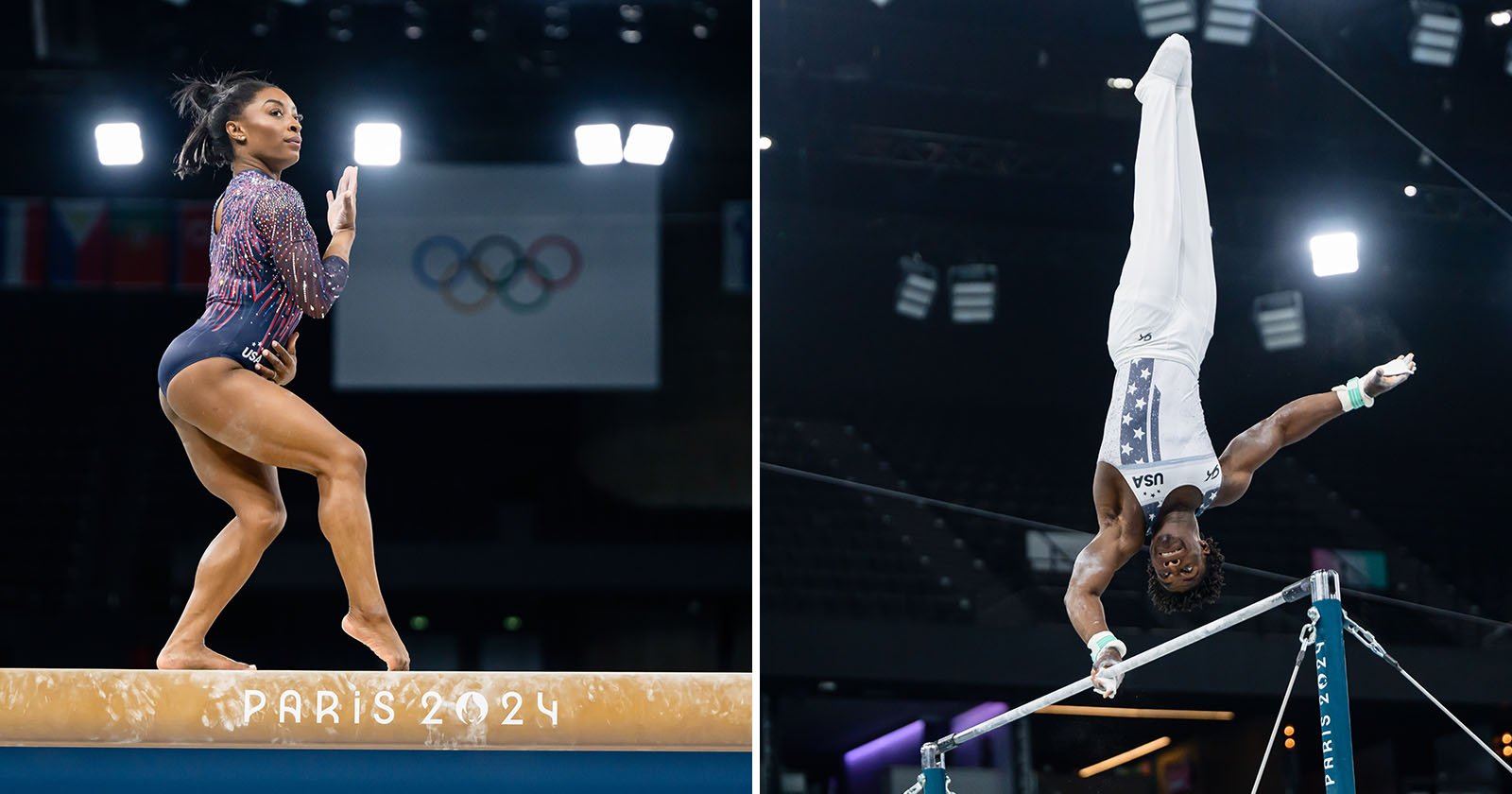
John Cheng is the official photographer for USA Gymnastics (USAG), one of the most interesting jobs in all of sports photography. PetaPixel chatted with Cheng about his career, his work, what it’s like shooting gymnastics, and his experience at the Paris 2024 Olympics, where Team USA won numerous medals, including the gold in the women’s team event. An Unusual Path Toward Professional Photography Cheng’s path to Paris is an interesting one. Like many who find photography as an adult, Cheng’s kids inspired his entry into photography. “My daughter Allison was a gymnast. I picked up a camera to photograph her at gymnastics meets as a gym dad,” Cheng explains. “The gym club she went to asked if I would take photos at the state competition they were hosting as a fundraiser. Other gym clubs approached me to cover their competitions and just kind of snowballed from there.” Paul Juda (United States of America)
Asher Hong (United States of America) Stephen Nedoroscik (United States of America) At the time, Cheng was in corporate IT, and photography was just a hobby. That has long since changed. He has been the official USA Gymnastics photographer since 2007. Cheng and his wife own an event coverage company, Team Photo. They cover gymnastics events along the East Coast during the primary competitive season, which runs from November through July. Sunisa Lee (United States of America) Sunisa Lee (United States of America) Advancing Technology For these smaller, local meets, Cheng says one of the biggest challenges is lighting at venues. “Most local venues are poorly lit,” he says. “Fast action in a poorly-lit environment do not mix.”
“But with advances in technologies with the camera bodies we’re able to still freeze the action under extremely poor lighting conditions.” Cheng uses Nikon gear, including the company’s latest mirrorless cameras, like the Nikon Z9. Simone Biles (United States of America) Paul Juda (United States of America) “Advances in the sensor technology allows us to freeze the action in low light environment. It’s not unusual for us to be shooting at ISO 12800, f/2.8, and 1/1000s at local Team Photo events and still providing beautiful photos. I currently shoot with Nikon Z9 mirrorless bodies.” Cheng’s lens of choice at most events is the Nikkor Z 70-200mm f/2.8 VR S lens. However, he also uses Nikon’s 120-300mm f/2.8 and Z 400mm f/2.8 TC VR S lenses. The longer lenses are necessary when he’s on international assignment for USAG, as he doesn’t have access to the field of play for competitions like the World Championships and the Olympic Games. Simone Biles (United States of America)
Jade Carey (United States of America) Premier events, like the recent Paris Olympics, “are under TV lighting,” there aren’t any issues there. How Knowing the Athletes Makes for Better Sports Photos Cheng has a fairly different workflow from a sports photographer who works for a news agency, as they typically photograph a diverse range of sports and are constantly shooting different events. For Cheng, since he spends so much time with Team USA athletes at various levels, he develops a rapport with them. “[I get] to know them on a personal basis,” Cheng says. “It helps when I’m familiar with their routines and personality and take those into account while shooting them.” Jordan Chiles (United States of America) Sunisa Lee (United States of America) By knowing the athletes more than a typical photographer would, Cheng says he’s better able to capture not only the peak action moments — the typical sports shots — but also shoot images that show elite athletes as people, not just gymnasts.
“I don’t stop shooting after a routine is done. I follow the athletes in hopes of capturing the emotional shots with either the coaches or other athletes,” Cheng explains. Being the USAG photographer also means Cheng’s responsibilities go far beyond shooting specific athletes and events. 500GYMST “USAG assignments include but not limited to the competitions, training, press conferences, activities around the premier events, such as FanFest, headshots and team shots for National Teams. Photos are used for social, print promotion, sponsor signage, etc.” During competition, Cheng’s favorite event to photograph is the beam for women’s competition and the high bar for the men. Practice Makes (Almost) Perfect Given that Cheng started taking family sports photos, he is uniquely positioned to offer advice to many amateurs who hope to improve their craft and turn photography into a profession.
“Keep shooting, and shoot lots. Practice (almost) makes perfect,” Cheng says. “I’m probably my own worst critic when it comes to gymnastics photos, but that’s the only way to get better.” Stephen Nedoroscik (United States of America) Sunisa Lee (United States of America) Simone Biles (United States of America) As for what makes a successful sports photo, Cheng admits it’s subjective, but a good photo typically tells a story. “If you can tell a story from a single photo, you have a successful photo.” He has some other important advice for people, especially beginners. “Do not shoot for free. Value your own work and do not trade your talent for a free credential.” This is a big issue with smaller sporting events, as people are keen to exchange access for free photos. More from John Cheng After the whirlwind of Paris, Cheng is taking a beat and preparing for the gymnastics meet season to start this fall. More of his work is available on his website, Instagram, and the Facebook page for Team Photo.
Image credits: All photos © John Cheng / Team Photo






